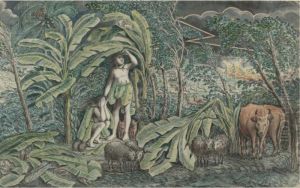Jan Brandes Paintings
Jan Brandes was a Dutch artist, born on February 24, 1743, in Zwolle, the Netherlands. He was not only a skilled draftsman but also a Lutheran minister. Brandes carried out his pastoral work while pursuing his artistic endeavors, which provides an interesting intersection between his religious and artistic life.
Brandes is best known for his detailed drawings and sketches, which offer a unique perspective on the 18th-century life and landscapes. His works are especially valuable for their ethnographic and topographic content. Brandes had a particular interest in capturing the daily life, flora, and fauna of the environments he encountered.
In 1785, Jan Brandes embarked on a significant journey to the Dutch East Indies as a preacher. During his time there, he meticulously documented the world around him through his art. His drawings from this period are significant historical records of the Dutch colonial presence in Asia and provide rich insights into the cultural and natural history of the region.
Brandes returned to the Netherlands in 1791 and continued to work until his death on May 28, 1808, in Rotterdam. Over the course of his life, he compiled a vast collection of drawings, which were not widely known during his lifetime but gained recognition posthumously. Today, his works are studied for their historical value and are housed in various museum collections, including the Rijksmuseum in Amsterdam. They are considered important contributions to the visual documentation of the 18th-century Dutch colonial experience.
